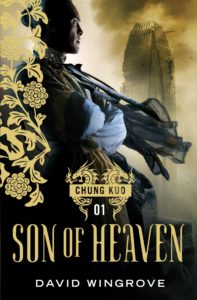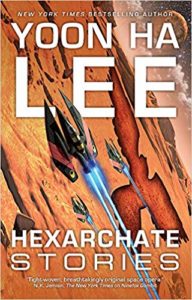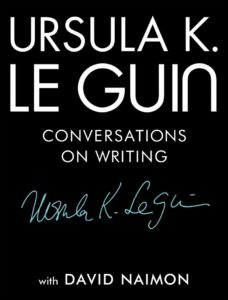So on the one hand, this is some gorgeously written, truly imaginative sci-fi set in a world where the science seems like magic, so much so that the book reads like a terrific fantasy novel. It’s also a sharply drawn parable of slavery and gilded cages, based on inherent powers owned by people dubbed orogenes for their ability to draw kinetic and thermal energy out of their immediate surroundings, primarily to protect themselves but also to quell the constant tremors of a disquieted Earth. The orogenes, derogatorily called roggas, are taught self-control in the Fulcrums of empire, and are watched over by Guardians, who keep the orogenes’ powers in check. Non-Fulcrum orogenes are feared and often lynched by the citizens of the Sanzed empire, so Fulcrum orogenes have every incentive to stay in line.
This book begins with a non-Fulcrum orogene named Essun as she discovers that her youngest child was beaten to death by his father after he was discovered to be an orogene like she is, like she never told her husband Jija that she is. She goes in pursuit of the fleeing Jija and their daughter, Nassun, uncaring of the great calamity that has just befallen the empire. Essun’s chapters are interspersed with chapters from the point of view of a girl named Damaya, whose orogene powers have just been discovered, and a young woman named Syenite, whose ambition to rise among the ranks of fellow Fulcrum orogenes has her engaging in activities she would much prefer not to. How their paths draw together makes up the bulk of this cleverly constructed book.
So that’s one hand. On the other, I wasn’t terribly surprised by most of the plot twists, particularly regarding our three female leads. I’d also been expecting the last sentence from about halfway through the book, when N. K. Jemisin meditates on people not missing what they never knew (which I’m guessing is also what “Earth’s only begotten son” is in reference to.) And, except for his one line near the end about never being able to forgive Syenite, I hated everything about Alabaster and about how we were supposed to find him, if not outright heroic, at least noble and misunderstood. He’s a manipulative asshole who constantly undermines and belittles Syenite but it’s okay because he’s more enlightened than she is about the Fulcrum? Whereas Syenite is just a brainwashed slave to Empire who should be grateful for his friendship, no matter how he mistreats her? Fuck aaaaaaalllll that noise. I understand that hurt people hurt people but that doesn’t make them any more likeable, much less heroic. It was absolutely maddening to read how he’d fuck with her for being polite a/o deferential to him, then have him ask “Why do you hate me so much?” just a few pages later. Like, because you can’t act like an internally consistent human being? I get that he’s not “normal,” that he’s been damaged, but that’s not an excuse to be mean to people who aren’t responsible for your pain, much less pull the victim card when you sense they’re not reacting the way you want them to. So when you find out what he did, it’s just an “ugh, this asshole, of course he did.” Literally the only time I could sympathize with him was when he talked to Syenite about Corundum at the end.
I did appreciate, however, Ms Jemisin’s commitment to diversity, particularly when it came to sexuality and gender. And I’m very much looking forward to the next book, and the surprises that lie in store with the Stone Eaters. This is a truly original setting, with a lot of excellent craft shown in the telling of Essun’s story (tho, minor quibble, I thought her grief lacked the guilt that should have been tacked on after we find out what she’d done a decade earlier, or at least the self-examination of how the two events were emotionally related.) I’m hoping there’s a lot less of whiny, self-pitying Alabaster, or at least that we won’t have to treat him like a hero in the next book. There’s tragic hero flawed, like Essun, and then there’s bitchy douchebag flawed, and he’s definitely more the latter than the former.
Also, also, and I almost hate to say this because it’s hugely spoiler-tastic, I did appreciate the callback to classic African-American literature. I admit to not being overly fond of the crux of the original novel, but found it, to paraphrase what Alabaster would say, far more understandable here (even if I thought Syenite should have maybe tried the thing with her powers first and am confused as to why Corundum did not use his own powers at that juncture, tho maybe he did and it just got lost in the chaos.)
You can read Doug’s thoughts here. He’s far less nit-picky than I am about it, but he also liked the book considerably less.






